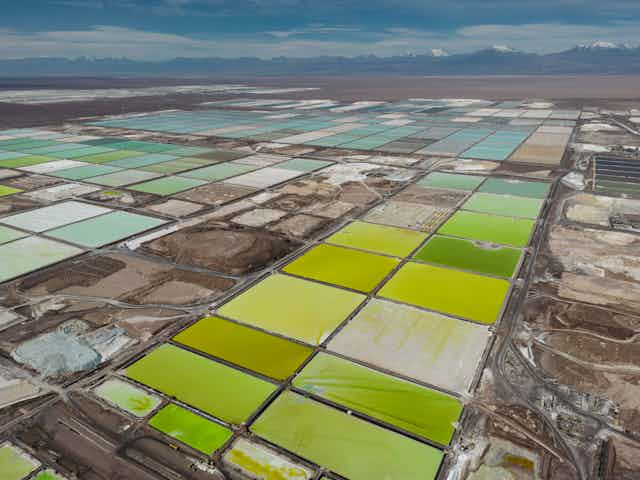Global warming is real and climate change is worsening day-by-day with raging forest fires, unseasonably warm winters and flooding disasters taking place across Canada. Meanwhile, the carbon-zero transition required to move away from such a dire future is hampered by a key weakness — “critical minerals.”
The energy transition depends on so-called “battery” or “critical” minerals to be successful — minerals which must be mined or recycled. Smart phones, superconductor chips, renewable energy technologies and even the defence industry all rely heavily upon critical minerals. Demand for these minerals is set to triple by 2030.
However, the uncomfortable reality is that the supply of these metals is simply not there, and their extraction carries huge social and ecological risks. This problem affects us all.
What are critical minerals?
There is no universal consensus on what critical minerals are. Various countries and bodies such as the International Energy Agency or the World Bank have different lists and the contents of these lists do not remain static.
For instance, the Canadian Critical Minerals List contains 31 minerals or mineral groups. The United States has two lists: the U.S. Geological Survey Critical Minerals List that contains 50 individual minerals and the Department of Energy Critical Materials for Energy List, which adds energy materials like copper and silicon. The European Union has a list of 34 Critical Raw Materials.
The term “critical mineral” is technically a misnomer as most of the elements on these lists are metals and not minerals. However, there are broad areas of agreement: most lists include battery metals such as lithium, nickel, cobalt and copper, as well as rare earth elements and platinum group metals. Other common elements are the alloys of steel, such as chromium, manganese and zinc.

All of these elements are crucial to the energy transition. Battery metals power electric vehicles and storage batteries, steel and rare earth elements are imperative for wind turbines and copper is essential for power grids. Simply put, shortages in critical minerals mean a delayed energy transition and worsening climate impacts.
Yet electric vehicles are only as “clean” as the electricity grid that feeds them. They are only as “green” as their component parts. The batteries require nickel, which could well have come from a mine in the Philippines that legally dumps its tailings (toxic waste) in oceans. Meanwhile, the vital cobalt can’t be separated from the human miseries of mining in the Democratic Republic of the Congo — a mining industry referred to as “a new form of slavery, a subterranean slavery.”
Why are critical minerals problematic?
Critical minerals are often found in deposits that are highly concentrated geographically, and China is a dominant force in their processing and supply. This means that geopolitical tensions can make it harder to secure critical mineral supply chains.
A December 2023 World Economic Forum White Paper maps ecosystem risks arising from a lack of supply in critical minerals. Its conclusions are clear.
Not only does a delayed energy transition await us at the end of the road, but the signposts along the way indicate that these risks are already playing out.

For instance, political risks identified include conflict over resources, increasing resource nationalism and increasing trade fragmentation. Among the economic risks are market volatility and uncertainty, as well as stockpiling of critical minerals.
Socio-environmental risks comprise an increase in exploitative and illegal mining and a higher demand on ecosystems, while technological risks point to cascading renewable technology shortages.
The impacts of critical minerals mining
When considering the implications of minerals shortages, it may be tempting to justify critical minerals mining at all costs, however, this is a dangerous fallacy. The social and environmental impacts of poorly mined critical minerals are dire.
These range from lithium’s water intensity in the fragile landscapes of the Chilean Atacama desert to the toxic processes inherent in the processing of the rare earth elements whose use is ubiquitous in smart technology and wind turbines. Diminishing ore grades mean ever bigger tailings dams, and climate change makes them more prone to accidents.
For Indigenous communities, critical minerals hold both promise and peril. Studies have shown that critical minerals are often heavily concentrated on Indigenous lands. For them, the question arises whether this will open the door to Indigenous economic development or if it will constitute yet another instance of displacement and ecological destruction on their doorstep.
The importance of independent standards authorities such as the Initiative for Responsible Mining Assurance (IRMA) cannot be overemphasized. In contrast to industry standards such as Towards Sustainable Mining, IRMA represents multiple stakeholder views. These include communities, employees, investors and mines.

Mining is by its very nature a highly energy intensive process. While it is expensive and technically complex to retrofit existing mines for electrification purposes, new mines should be designed with carbon neutrality in mind. Of course, this can be particularly difficult in places that are experiencing infrastructure challenges, such as limited renewable or low carbon energy options.
Greenfield mining is not the sole solution to the critical minerals conundrum. Urban mining (extraction from electronic waste) can play an important role. It’s also important to design products manufactured from critical minerals with recycling and repurposing in mind.
By investing in research and development, we can find substitutes to the most problematic minerals, whether the underlying issues are geopolitical constraints, toxicity or human rights abuses.
The bottom line
At the end of the day, we need responsible mining practices that will enable us to obtain the minerals required to make the energy transition work. However, we must do so in a way that is just and equitable towards both people and the planet.
Read more: Renewable energy innovation isn't just good for the climate — it's also good for the economy
This goal is a race against time, requiring both innovation and a never-ending vigilance against a lowering of standards to meet short-term needs — a vigilance which we all must work to maintain.


